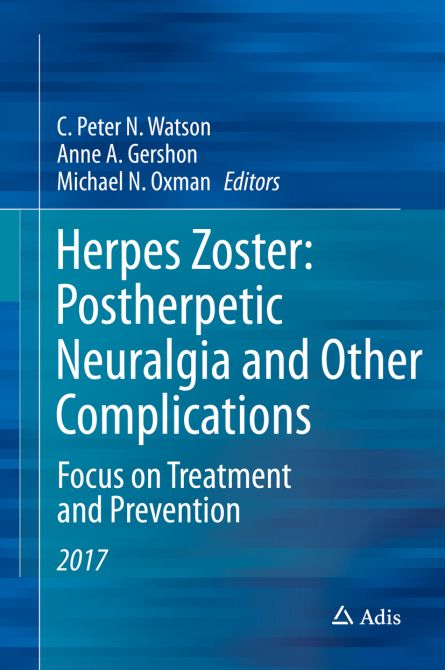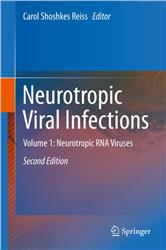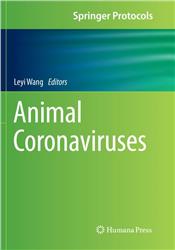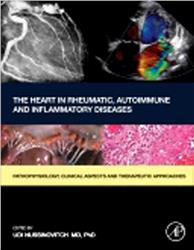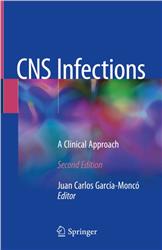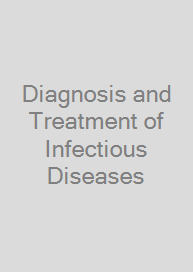Herpes Zoster and Postherpetic Neuralgia
Focus on Treatment and Prevention
| Auflage | 2017 |
| Verlag | Springer |
| ISBN | 9783319443461 |
| Artikel-Nr. | 558920 |
Lieferzeit ca. 5 Werktage
Produktbeschreibung
The benefits of this book are that the editors and senior chapter authors are international authorities regarding infectious diseases and neuropathic pain. The book is state-of-the-art and contains important new information about the role of this virus in terms of vascular risk, such as heart attacks, stroke, as well as granulomatous angiitis (temporal arteritis). There is also new information on gastrointestinal involvement especially often in the absence of rash, as is seen with vasculopathies. New research is presented about the pathology and pathophysiology of postherpetic neuralgia. There is much that the reader can find about the state-of-the-art treatment of postherpetic neuralgia and its complications. The focus is also on the prevention through zoster prevention vaccines, such as the current vaccine and a newer, more effective and more broadly applicable vaccine which can be given to immunosuppressed patients.
This is the third edition of the book, Herpes Zoster and Postherpetic Neuralgia, previously edited by the current editor. This book is divided into a number of sections. A section on herpes zoster includes epidemiology and natural history of the varicella zoster virus, herpes zoster ophthalmicus, neurological complications, the role of varicella zoster virus in giant cell arteritis, concern about increased vascular risk of heart attack and stroke, antiviral therapy, and treatment of skin manifestations. The section on postherpetic neuralgia includes important information on the effect of herpes zoster and postherpetic neuralgia on quality of life, the neuropathology and pathophysiological mechanisms in postherpetic neuralgia, and the new concept of persistent ganglionitis as the cause of postherpetic neuralgia. A comparison is made between facial postherpetic neuralgia and trigeminal neuralgia. There is an extensive section on treatment, including the role of opioids, the general treatment of postherpetic neuralgia, intervention and neurosurgical approaches. This important section covers guidelines for clinical trial designs in postherpetic neuralgia. A final section addresses the questions of whether aggressive treatment of acute herpes zoster can prevent postherpetic neuralgia and a critically important chapter on herpes zoster vaccines. All these are written by senior chapter authors who are recognized as world leaders in each area.
This is the third edition of the book, Herpes Zoster and Postherpetic Neuralgia, previously edited by the current editor. This book is divided into a number of sections. A section on herpes zoster includes epidemiology and natural history of the varicella zoster virus, herpes zoster ophthalmicus, neurological complications, the role of varicella zoster virus in giant cell arteritis, concern about increased vascular risk of heart attack and stroke, antiviral therapy, and treatment of skin manifestations. The section on postherpetic neuralgia includes important information on the effect of herpes zoster and postherpetic neuralgia on quality of life, the neuropathology and pathophysiological mechanisms in postherpetic neuralgia, and the new concept of persistent ganglionitis as the cause of postherpetic neuralgia. A comparison is made between facial postherpetic neuralgia and trigeminal neuralgia. There is an extensive section on treatment, including the role of opioids, the general treatment of postherpetic neuralgia, intervention and neurosurgical approaches. This important section covers guidelines for clinical trial designs in postherpetic neuralgia. A final section addresses the questions of whether aggressive treatment of acute herpes zoster can prevent postherpetic neuralgia and a critically important chapter on herpes zoster vaccines. All these are written by senior chapter authors who are recognized as world leaders in each area.

Bleiben Sie informiert!
Melden Sie sich für den frohberg.de-Newsletter an und nutzen Sie jetzt Ihre Vorteil:- Willkommens-Dankeschön: Beatmungsmaske Rescue Me
- Aktuelle Neuerscheinungen und Empfehlungen
- Exklusive Angebote und Kongress-Highlights
